Inverurie’s modern development followed the opening of the Aberdeen Canal, in 1806, the arrival of the railway, in 1845, and particularly the Loco Works built by the Great North of Scotland Railway in 1898–1905. Ten locomotives were built at the Inverurie Loco Works before it switched to repairs and maintenance. The works closed in 1969. The only surviving example of a GNSR locomotive is the Gordon Highlander, now on display at the Scottish Railway Museum.
Photographs and text about The Gordon Highlander.
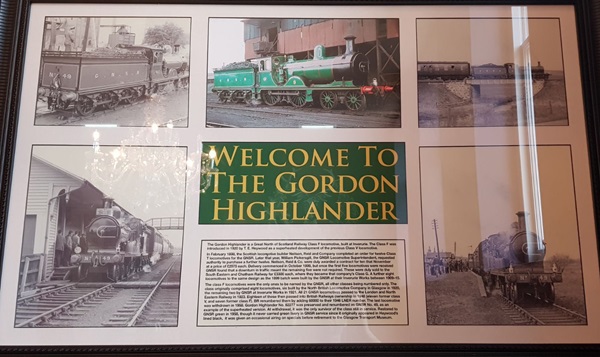
The text reads: The Gordon Highlander is a Great North of Scotland Railway Class F locomotive, built at Inverurie. The Class F was introduced in 1920 by TE Heywood as a superheated development of the previous Class V locomotive.
In February 1898, the Scottish locomotive builder Neilson, Reid and Company completed an order for twelve Class T locomotives for the GNSR. Later that year, William Pickersgill, the GNSR Locomotive superintendent, requested authority to purchase a further twelve. Neilson, Reid & Co. were duly awarded a contract for ten that November at a price of £2975 each. Delivery commenced in October 1899, but once the first five locomotives were received GNSR found that a downturn in traffic meant the remaining five were not required. These were duly sold to the South Eastern and Chatham Railway for £3300 each, where they became that company’s Class G. A further eight locomotives to the same design as the 1899 batch were built by the GNSR at their Inverurie Works between 1909-15.
The class F locomotives were the only ones to be named by the GNSR, all other classes being numbered only. The class originally compromised eight locomotives, six built by the North British Locomotive Company in Glasgow in 1920, the remaining two by GNSR at Inverurie Works in 1921. All 21 GNSR locomotives passed to the London and North Eastern Railway in 1923. Eighteen of these then passed into British Railways ownership in 1948 (eleven former Class V, and seven former Class F). BR renumbered them by adding 60000 to their 1946 LNER number. The last locomotive was withdrawn in 1958. Gordon Highlander No. 62277 was preserved and renumbered as GNSR No. 49, as an example of the superheated version. At withdrawal, it was the only survivor of the class still in service. Restored to GNSR green in 1958, though it never carried green livery in GNSR service since it originally appeared in Heywood’s lined black, it was given an occasional airing on specials before retirement to the Glasgow Transport Museum.
A plaque documenting the history of The Gordon Highlander.
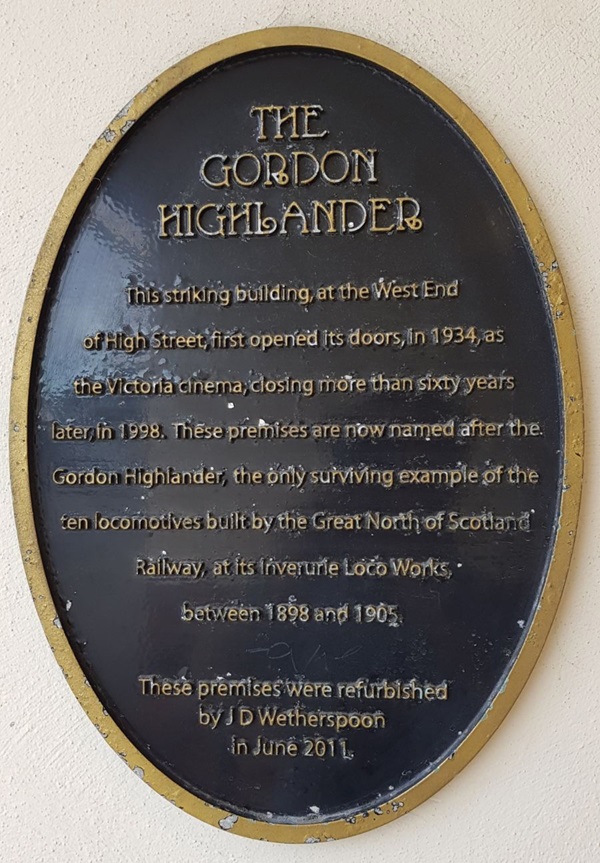
The plaque reads: This striking building at the West End of High Street first opened its doors in 1934 as the Victoria cinema, closing more than sixty years later, in 1998. These premises are now named after the Gordon Highlander, the only surviving example of the ten locomotives built by the Great North of Scotland Railway, at its Inverurie Loco Works, between 1898 and 1905.
These premises were refurbished by J D Wetherspoon in June 2011.
Prints of the Gordon Highlander.
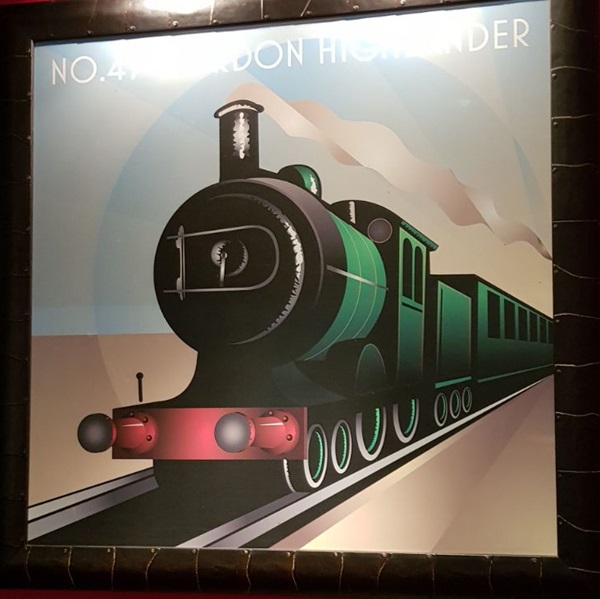
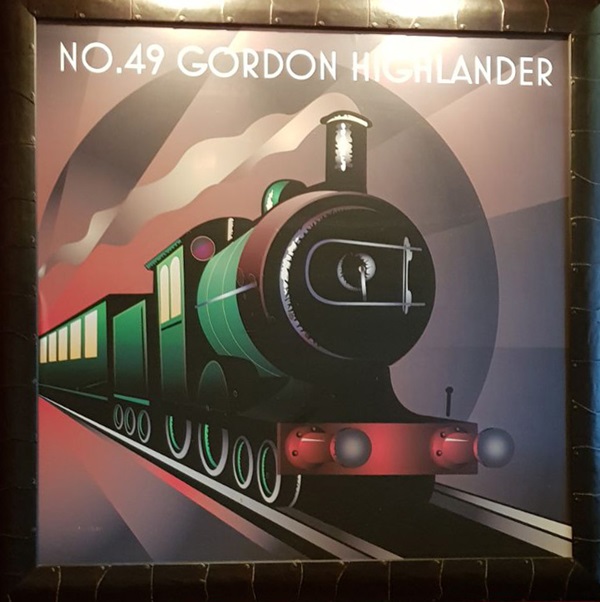
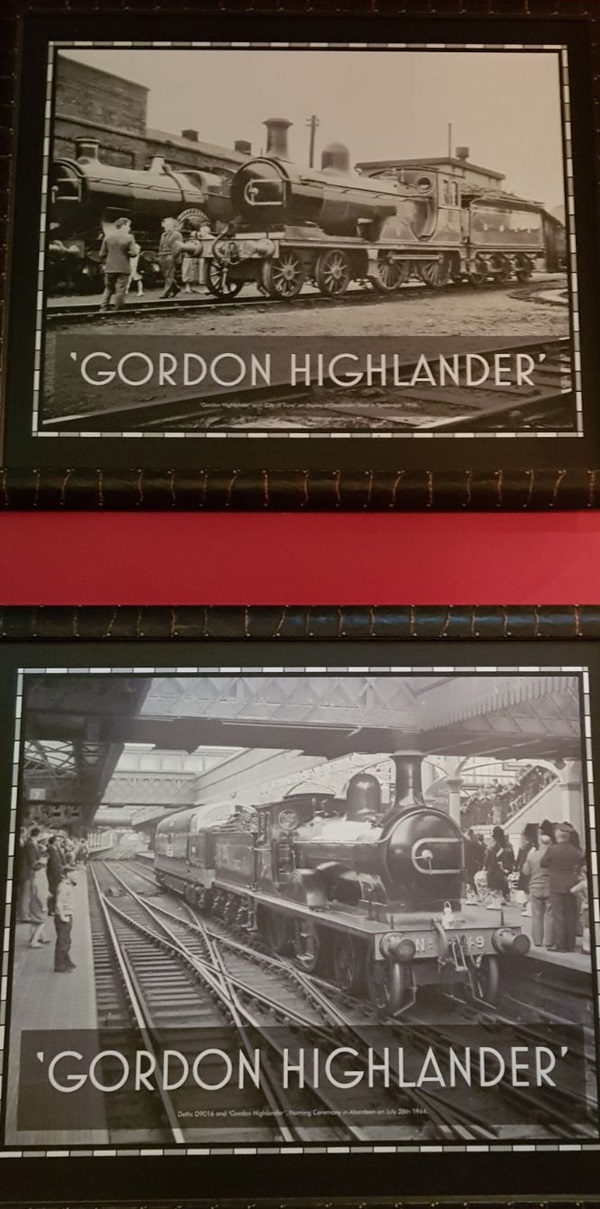
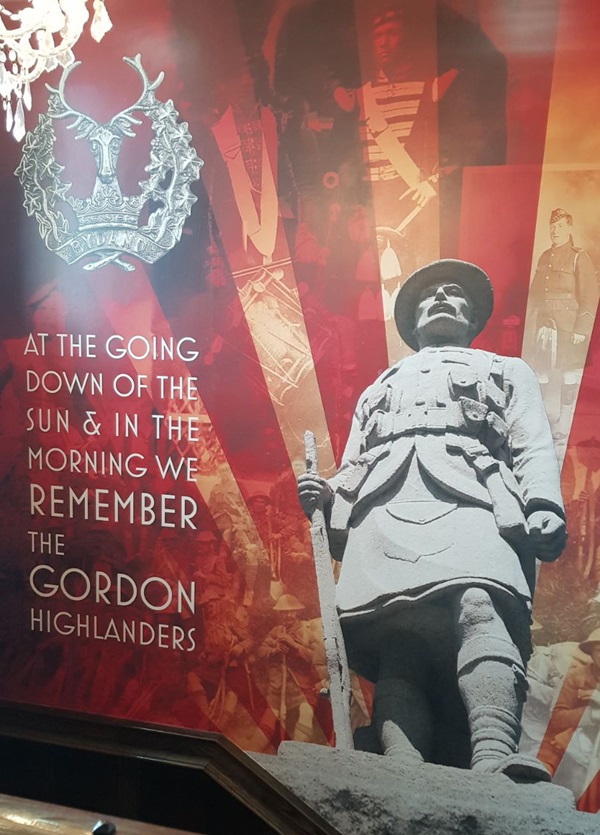
A photograph and text about the end of the line.
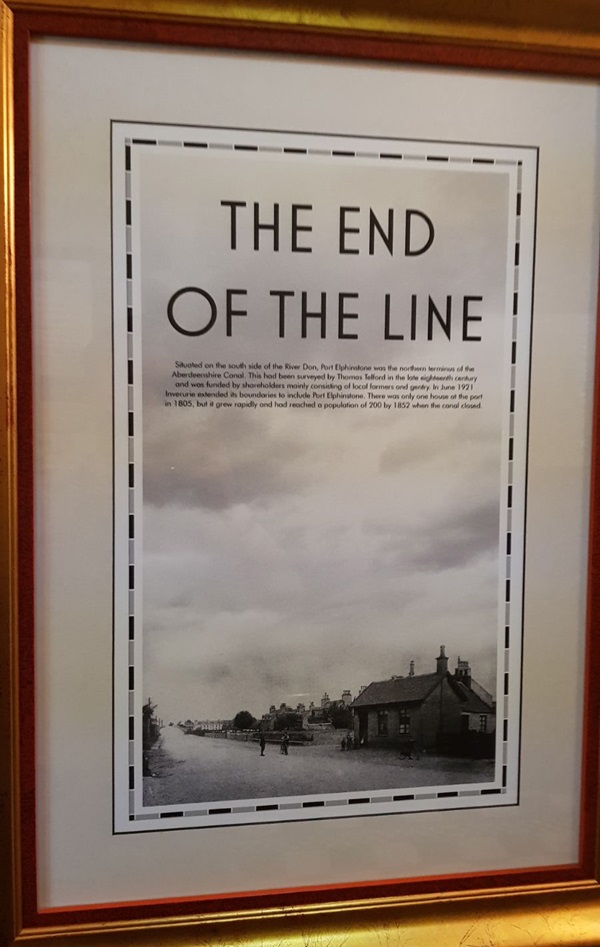
The text reads: Situated on the south side of the River Don, Port Elphinstone was the northern terminus of the Aberdeenshire Canal. This had been surveyed by Thomas Telford in the late eighteenth century and was funded by shareholders mainly consisting of local farmers and gentry. In June 1921 Inverurie extended its boundaries to include Port Elphinstone. There was only one house at the port in 1805, but it grew rapidly and had reached a population of 200 by 1852 when the canal closed.
Photographs and text about the Victoria cinema.
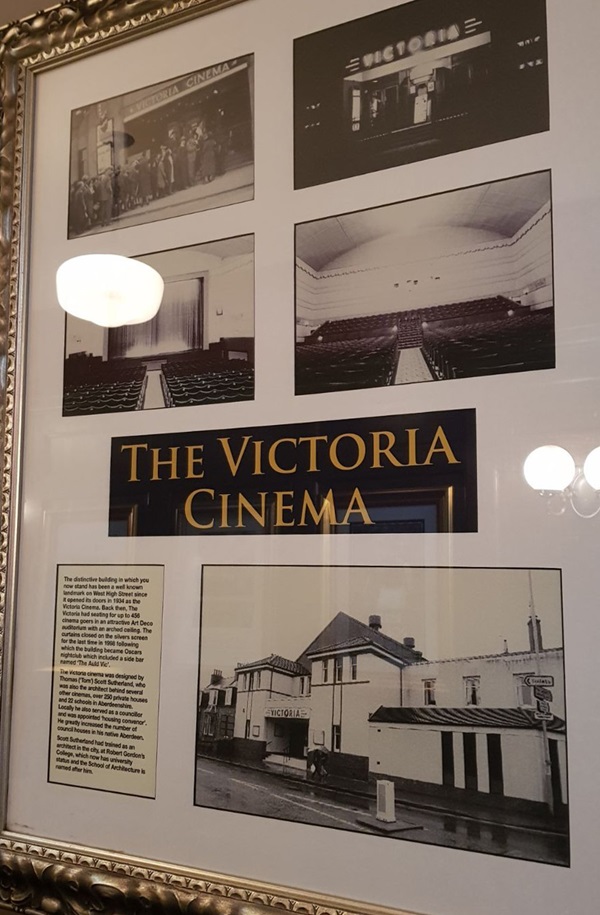
The text reads: The distinctive building in which you now stand has been a well-known landmark on West High Street since it opened its doors in 1934 as the Victoria cinema. Back then, The Victoria had seating for up to 456 cinema goers in an attractive Art Deco auditorium with an arched ceiling. The curtains closed on the silvers screen for the last time in 1998 following which the building became Oscars nightclub which included a side bar named The Auld Vic.
The Victoria cinema was designed by Thomas (‘Tom’) Scott Sutherland, who was also the architect behind several other cinemas, over 250 private houses and 22 schools in Aberdeenshire. Locally he also served as a councillor and was appointed housing convenor. He greatly increased the number of council houses in his native Aberdeen.
Scott Sutherland had trained as an architect in the city, at Robert Gordon’s College, which now has university status and the School of Architecture is named after him.
An illustration and text about Tom Scott Sutherland.
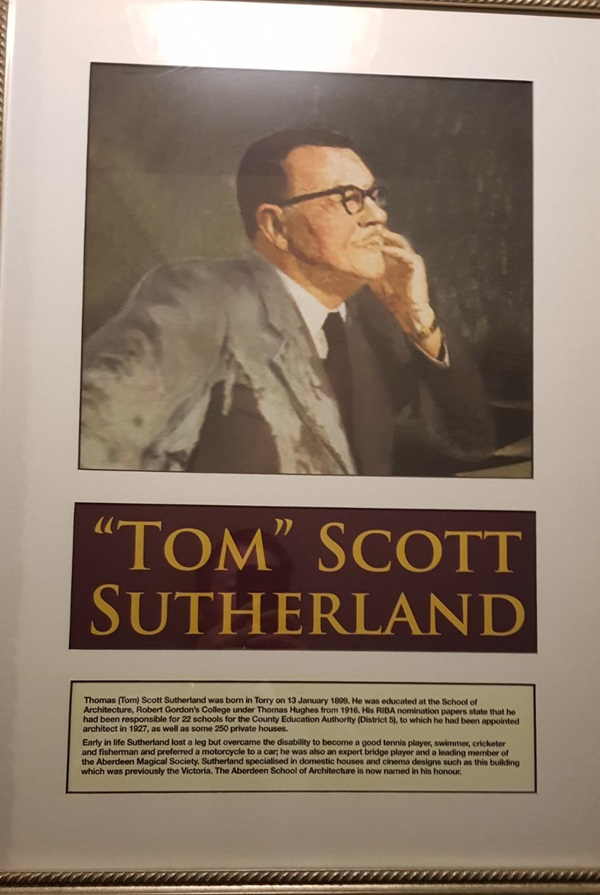
The text reads: Thomas (Tom) Scott Sutherland was born in Torry on 13 January 1899. He was educated at the School of Architecture, Robert Gordon’s College under Thomas Hughes from 1916. His RIBA nomination papers state that he had been responsible for 22 schools for the Country Education Authority (District 5), to which he had been appointed architect in 1927, as well as some 250 private houses.
Early in life Sutherland lost a leg but overcame the disability to become a good tennis player, swimmer, cricketer and fisherman and preferred a motorcycle to a car; he was also an expert bridge player and a leading member of the Aberdeen Magical Society. Sutherland specialised in domestic houses and cinema designs such as this building which was previously the Victoria. The Aberdeen School of Architecture is now named in his honour.
Illustrations of uniforms of soldiers of the British Army, 1815.
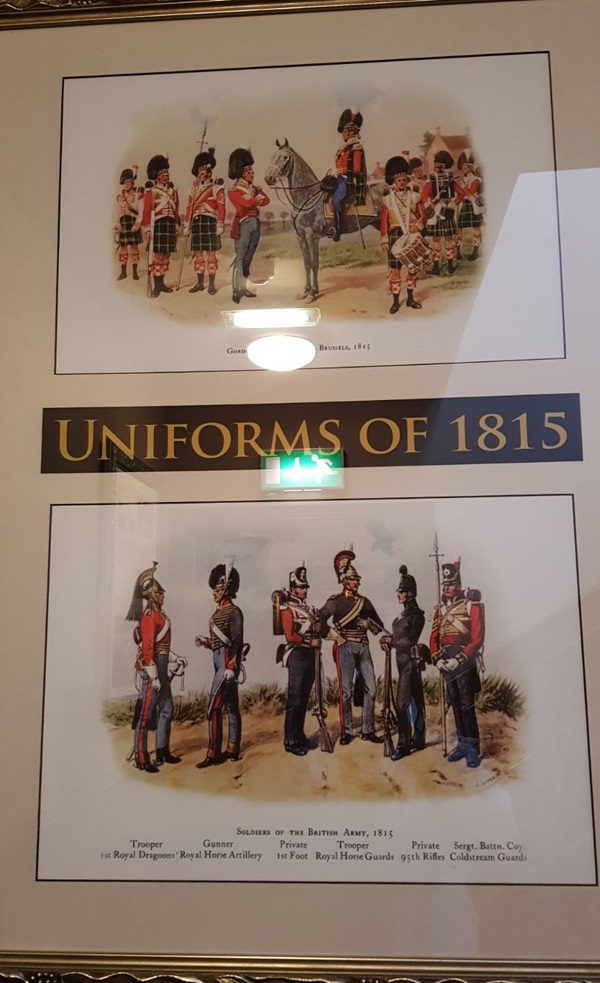
A photograph and text about the returning of the drum.
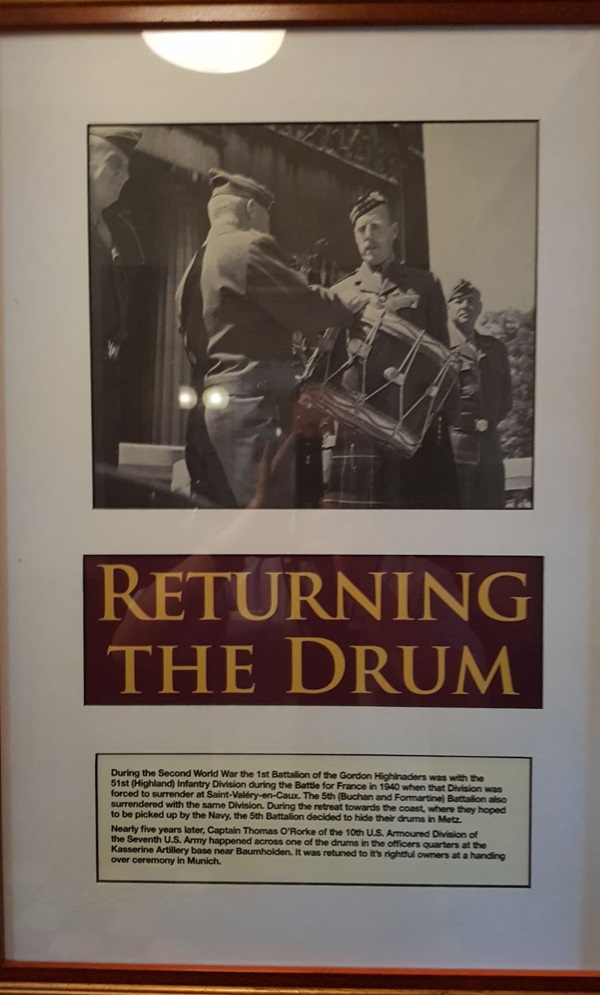
The text reads: During the Second World War the 1st Battalion of the Gordon Highlanders was the 51st (Highland) Infantry Division during the Battle for France in 1940 when that division was forced to surrender at Saint-Valéry-en-Caux. The 5th (Buchan and Formartine) Battalion also surrendered with the same division. During the retreat towards the coast, where they hoped to be picked up by the Navy, the 5th Battalion decided to hide their drums in Metz.
Nearly five years later, Captain Thomas O’Rorke of the 10th U.S. Armoured Division of the Seventh U.S. Army happened across one of the drums in the officer’s quarters at the Kasserine Artillery base near Baumholden. It was returned to its rightful owners at a handing over ceremony in Munich.
An illustration of the soldiers of the 1st Brigade, 2nd Division, 1812.
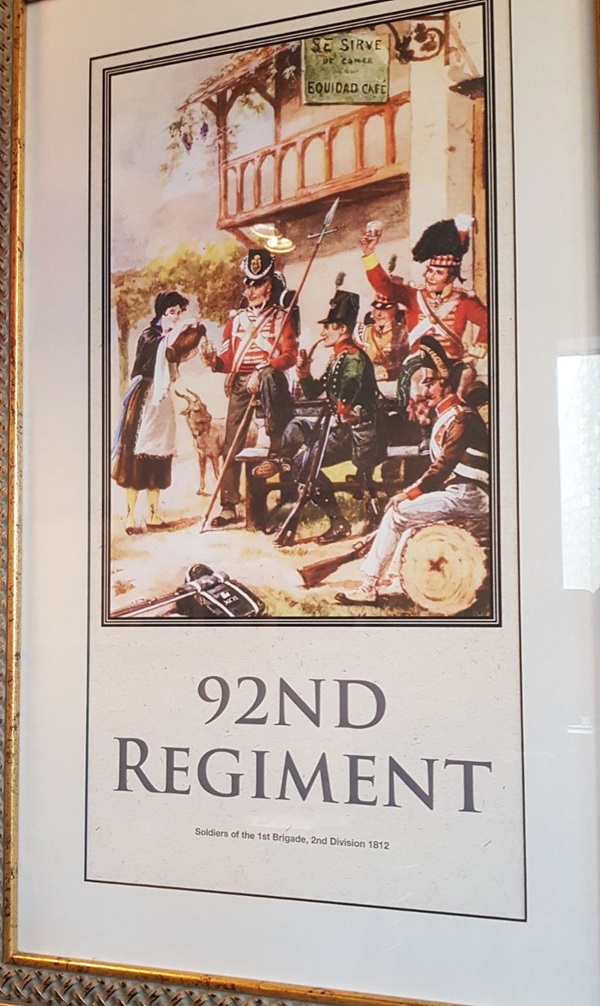
An illustration and text about David of Huntingdon.
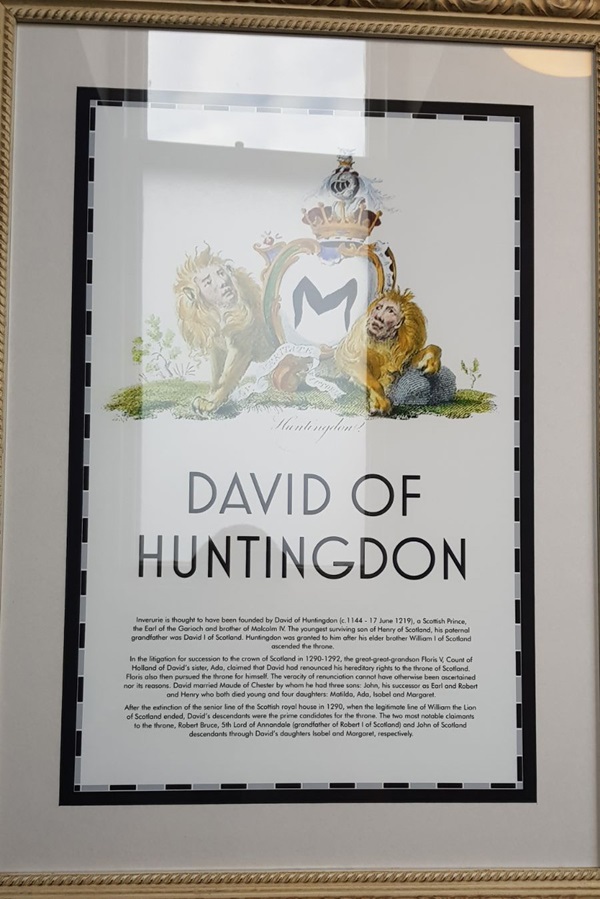
The text reads: Inverurie is thought to have been founded by David of Huntingdon (c1144 – 17 June 1219), a Scottish Prince, the Earl of the Gariach and brother of Malcolm IV. The youngest surviving son of Henry of Scotland, his paternal grandfather was David I of Scotland. Huntingdon was granted to him after his elder brother William I of Scotland ascended the throne.
In the litigation for succession to the crown of Scotland in 1290-92, the great-great-grandson Floris V, Count of Holland of David’s sister, Ada, claimed that David had renounced his hereditary rights to the throne of Scotland. Floris also then pursued the throne for himself. The veracity of renunciation cannot have otherwise been ascertained nor its reasons. David married Maude of Chester by whom he had three sons: John, his successor as Earl and Robert and Henry who both died young and four daughters: Matilda, Ada, Isobel and Margaret.
After the extinction of the senior line of the Scottish royal house in 1290, when the legitimate line of William the Lion of Scotland ended, David’s descendants were the prime candidates for the throne. The two most notable claimants to the throne, Robert Bruce, 5th Lord of Annandale (grandfather of Robert I of Scotland) and John of Scotland descendants through David’s daughters Isobel and Margaret, respectively.
An illustration and text about John Rennie.
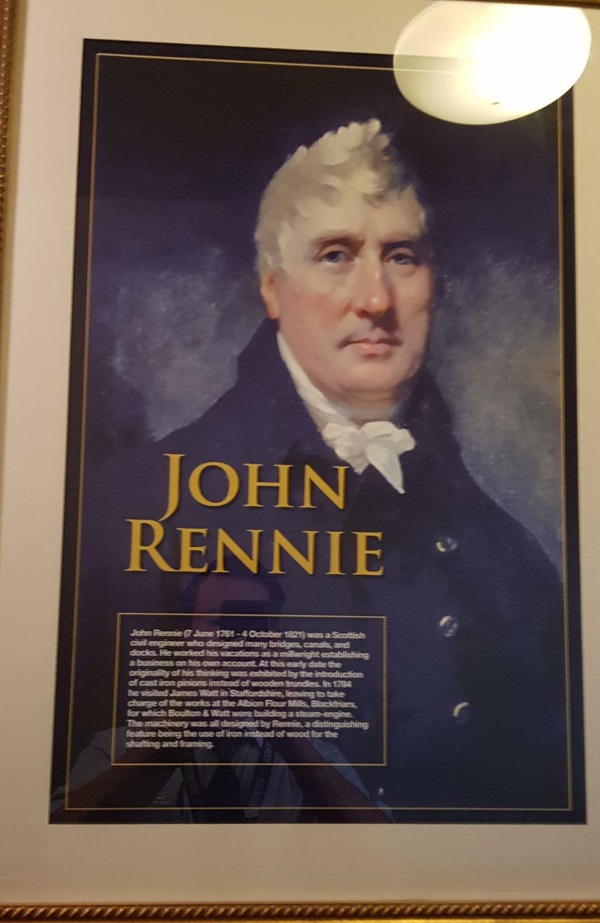
The text reads: John Rennie (7 June 1761 – 4 October 1821) was a Scottish civil engineer who designed many bridges, canals, and docks. He worked his vacations as a millwright establishing a business on his own account. At this early date the originality of his thinking was exhibited by the introduction of cast iron pinions instead of wooden trundles. In 1784 he visited James Watt in Staffordshire, leaving to take charge of the works at the Albion Flour Mills, Blackfriars, for which Boulton & Watt were building a steam-engine. The machinery was all designed by Rennie, a distinguishing feature being the use of iron instead of wood for the shafting and framing.
Photographs and text about Kemnay Quarry.
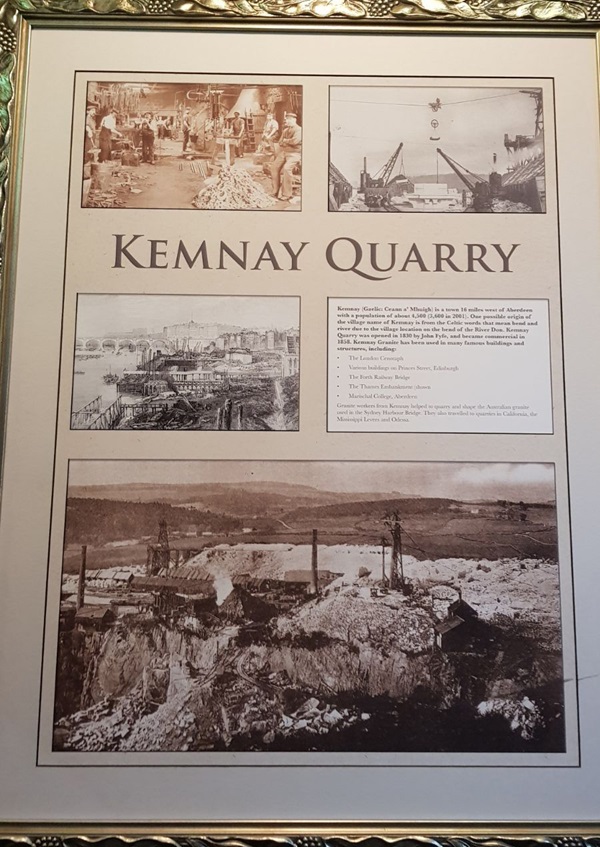
The text reads: Kemnay (Gaelic: Crann a’ Mhuigh) is a town 1.6 miles west of Aberdeen with a population of about 4,500 (3,600 in 2001). One possible origin of the village name of Kemnay is from the Celtic words that mean bend and river due to the village location on the bend of the River Don. Kemnay Quarry was opened in 1830 by John Fyfe, and became commercial in 1858. Kemnay Granite has been used in many famous buildings and structures, including:
• The London Cenotaph
• Various buildings on Princes Street, Edinburgh
• The Forth Railway Bridge
• The Thames Embankment (shown)
• Marischal College, Aberdeen
Granite workers from Kemnay helped to quarry and shape the Australian granite used in the Sydney Harbour Bridge. They also travelled to quarries in California, the Mississippi Levees and Odessa.
A photograph and text about the Aberdeenshire Canal.
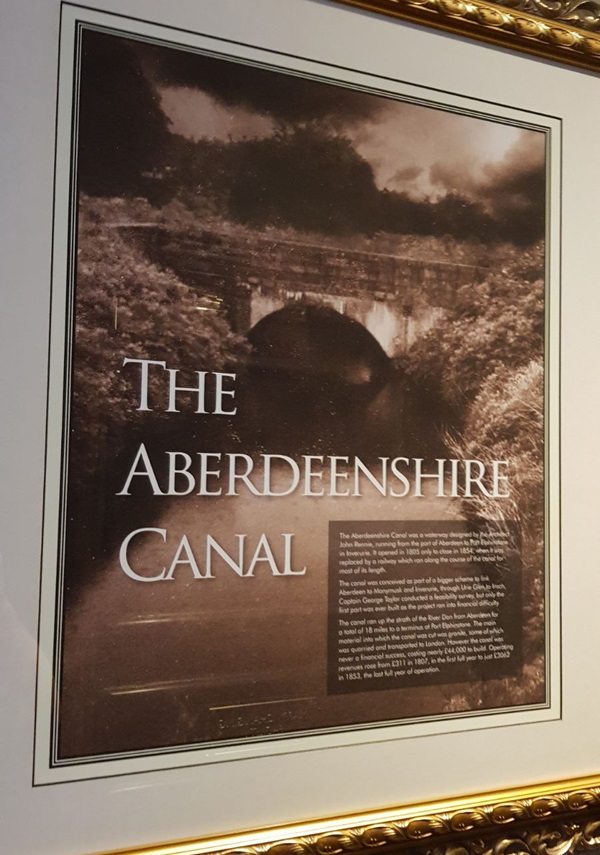
The text reads: The Aberdeenshire Canal was a waterway designed by the architect John Rennie, running from the Port of Aberdeen to Port Elphinstone in Inverurie. It opened in 1805 only to close in 1854, when it was replaced by a railway which ran along the course of the canal for most of its length.
The canal was conceived as part of a bigger scheme to link Aberdeen to Monymusk and Inverurie, through Urie Glen to Insch, Captain George Taylor conducted a feasibility survey, but only the first part was ever built as the project rain into financial difficulty.
The canal ran up the stretch of the River Don from Aberdeen for a total of 18 miles to a terminus at Port Elphinstone. The main material into which the canal was cut was granite, some of which was quarried and transported to London. However, the canal was never a financial success, costing nearly £44,000 to build. Operating revenues rose from £311 in 1807, in the first full year to just £3062 in 1853, the last full year of operation.
A photograph and text about the Stone Circle.
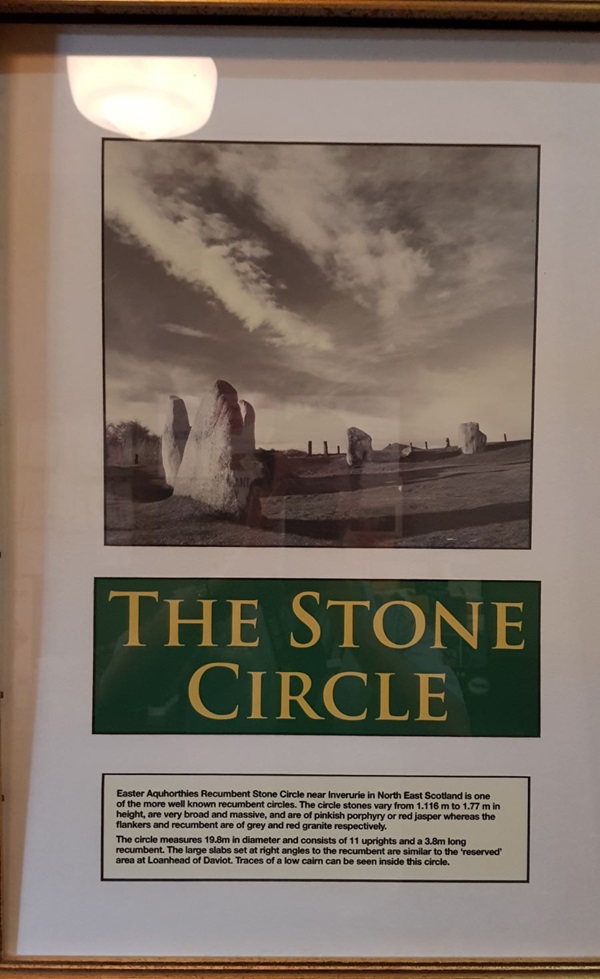
The test reads: Easter Aquhorthies Recumbent Stone Circle near Inverurie in north east Scotland is one of the more well known recumbent circles. The circle stones vary from 1.116m to 1.77m in height, are very broad and massive, and are of pinkish porphyry or red jasper whereas the flankers and recumbent are grey and red granite respectively.
The circle measures 19.8m in diameter and consists of 11 uprights and a 3.8m long recumbent. The large slabs set at right angles to the recumbent are similar to the ‘reserved’ area at Loanhead of Daviot. Traces of a low cairn can be seen inside this circle.
External photograph of the building – main entrance.
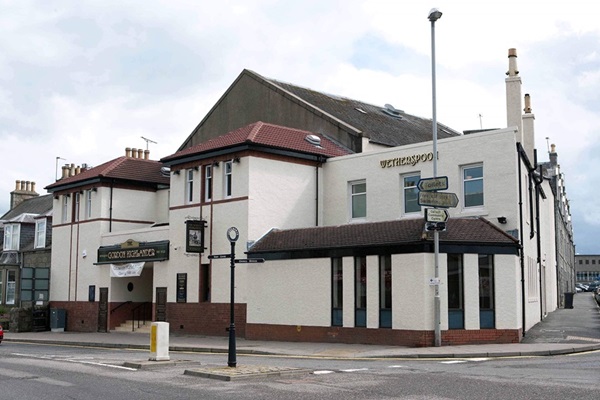
If you have information on the history of this pub, then we’d like you to share it with us. Please e-mail all information to: pubhistories@jdwetherspoon.co.uk